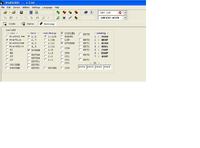abdoalghareeb
Member level 5

- Joined
- Feb 5, 2010
- Messages
- 84
- Helped
- 1
- Reputation
- 2
- Reaction score
- 1
- Trophy points
- 1,288
- Activity points
- 1,981
What is the most reliable PIC compiler using C language ?
I have started with MIKROC compile (version 5.0), but I have some problems in time calculation .
I have started with MIKROC compile (version 5.0), but I have some problems in time calculation .


